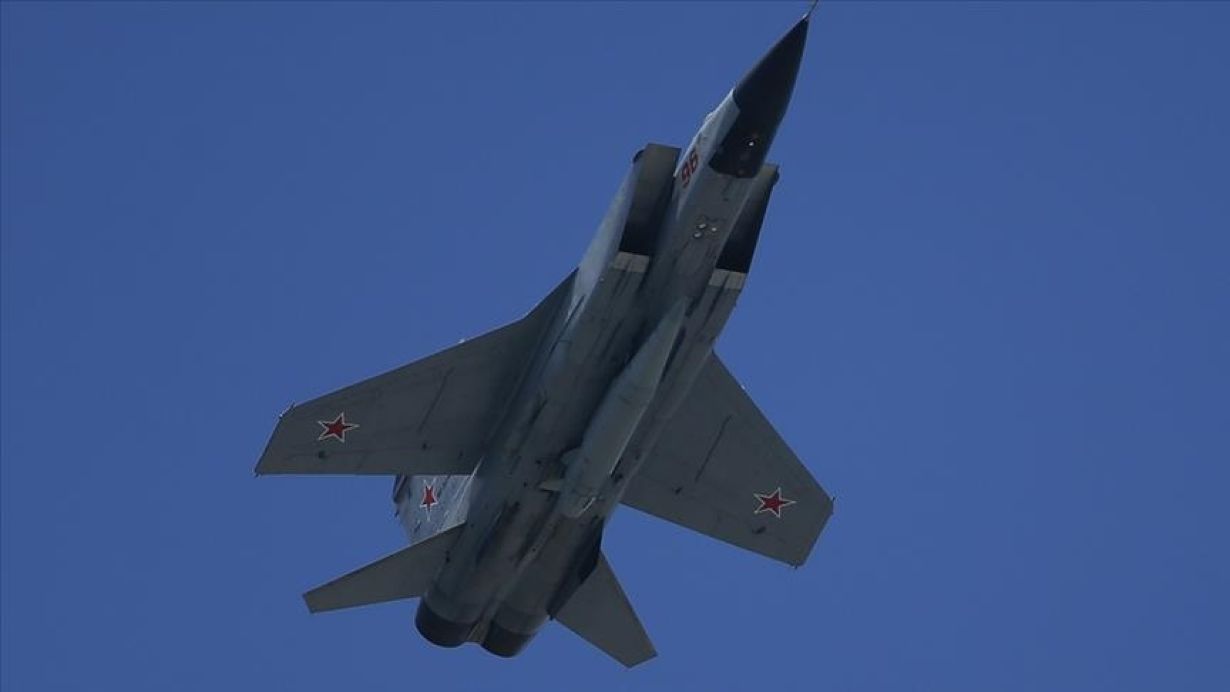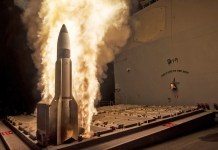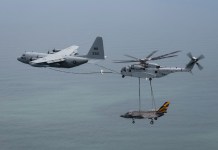By Ritu Sharma
Learning its lessons from the protracted Russia-Ukraine war and keeping an eye on growing tensions with China on the northern borders, the Indian Air Force (IAF) seeks a smaller and stealthier version of its supersonic cruise missile BrahMos, touted as ‘Brahmastra’ (the ultimate celestial weapon), that can be integrated with smaller war jets like Russian-built MiG-29s, French-made Mirage 2000s and even the indigenous Light Combat Aircraft (LCA).
MiG-29 vs F-16: Why MiG-29 Fulcrums Are Better Suited For Ukraine To Hold Russian Air Force Than Fighting Falcons
The original range of the BrahMos supersonic cruise missile, developed under an Indo-Russian Joint Venture, was 290 kilometers. A few months ago, the IAF had successfully tested an extended-range BrahMos cruise missile with a range of 450 kilometers fitted on a Sukhoi-30 MKI fighter jet.
The BrahMos can fly at three times the speed of sound at 2.8 Mach. The combat radius of Sukhois is 1500 kilometers, coupled with the 450 kilometers extended range of BrahMos. It has become a deadly package capable of delivering weapons at longer ranges.
“As the situation unfolded in the Northern borders three years ago, we realized that the potent weapon can be used effectively for land attacks… In the future, next-generation BrahMos or a small version that can be fitted onto smaller platforms like MiG-29, Mirage 2000 or even the LCA,” the IAF Chief Air Chief Marshal VR Chaudhari.
The IAF Chief has been referring to the first fatal confrontation between the two countries since 1975 as the soldiers from both sides fought. This plunged the bilateral relations between India and China to their lowest in decades. Both countries share a long land border spanning 2100 miles.
The BrahMos Aerospace has already begun work on the BrahMos NG (Next Generation), which is expected to be a lighter and stealthier version of the existing platform. The trials of the air-based system are slated to begin towards the fag end of the year 2024.

The NG will weigh 1.33 tons, about half as much as the current BrahMos integrated with Su-30MKI at 2.65 tons. In the development phase, the missile will be fitted on Russian-built jets, but later on, they will be deployed on Indian-made Light Combat Aircraft.
The Su-30 MKIs can carry four NG missiles, whereas the LCA will carry two.
“As one of our most lethal air-combat assets, the BrahMos supersonic missile has galvanized how we will equip ourselves with precision firepower in the coming years. Seeing the conflicts happening across the globe, the importance of precision and long-range firepower can’t be underscored,” the IAF Chief emphasized.
The Russia-Ukraine war has been interesting to the IAF as the force has sourced many weapons and weapon platforms in its fleet from Russia. The IAF is also observing the war in Ukraine to gauge the success of tactics and strategies concerning air power.
He added: “The combination of BrahMos on the Sukhoi Su-30 has given us a tremendous capability that has enhanced our firepower. It has made the deterrence value of the IAF go up by leaps.”
The IAF had moved the BrahMos-fitted Sukhois to the northern sector from their home base in Thanjavur during the peak of the conflict with China.
Russia’s invasion of Ukraine has been one of modern warfare’s largest testing grounds for ballistic and cruise missiles. The scale on which beyond visual range weapons are used in the Russia-Ukraine war is far greater than the US invasion of Iraq in 2003.

Apart from the scale, Russia has deployed different types of systems – like the ground-based Iskander Missiles, the short-range road-mobile missile OTR-21 Tochka system, the Kalibr cruise missiles, and the MiG-31 launched Kinzhal hypersonic cruise missiles and the Bastion and Bal coastal defense systems.
Possessing the ability to strike enemy bases and related sites is a powerful deterrent to potential enemy action. Given this, an 800-kilometer range BrahMos is in the development phase.
The air-breathing BrahMos has become the “prime conventional strike weapon” for the Indian Armed forces. The Indian Army has deployed the land version of the missiles in Ladakh and Arunachal Pradesh along its border with China. Ten Indian Navy warships have been armed, and five other vessels are fitted with vertical launch systems.
The IAF has modified 40 of its Sukhois to deliver air-version of BrahMos. And the state-owned Hindustan Aeronautics Ltd (HAL) aircraft maker will modify 20-25 more Sukhois.
The ‘Brahmastra’ For The South China Sea?
India’s move to deploy BrahMos along the Indo-China border evoked a sharp response from Beijing. The PLA Daily, the official publication of the People’s Liberation Army, said: “India deploying supersonic missiles on the border has exceeded its own needs for self-defense and poses a serious threat to China’s Tibet and Yunnan provinces.”

The BrahMos is based on the Russian P-800 Oniks, a sea and land-based supersonic cruise missile capable of hitting targets at a range of 1000 kilometers. BrahMos derives its name from the rivers Brahmaputra and Moskva in India and Russia, respectively.
It is designed to be fired at long ranges from their targets to shield the launching platform from enemy fire. BrahMos weighs twice as much as the legendary US Tomahawk cruise missiles and travels at a speed four times more than it. This combination results in greater kinetic energy when the missile strikes the target.
The BrahMos maintains its supersonic speeds while skimming at low altitudes to avoid radar detection, and as it approaches the target, it conducts an evasive maneuver. Along the border with China in Arunachal Pradesh, India has deployed ground-launched Mobile Autonomous Launcher systems mounted on 12-wheeled trucks.
While the missile range doesn’t cover the entire China, India has not been shy about selling the missiles to its allies in the South China Sea.
The Philippines has already become the first country to ink a deal to purchase BrahMos. There have been reports about India pitching these cruise missiles to Vietnam.
- Ritu Sharma has been a journalist for over a decade, writing on defense, foreign affairs, and nuclear technology.
- She can be reached at ritu.sharma (at) mail.com





